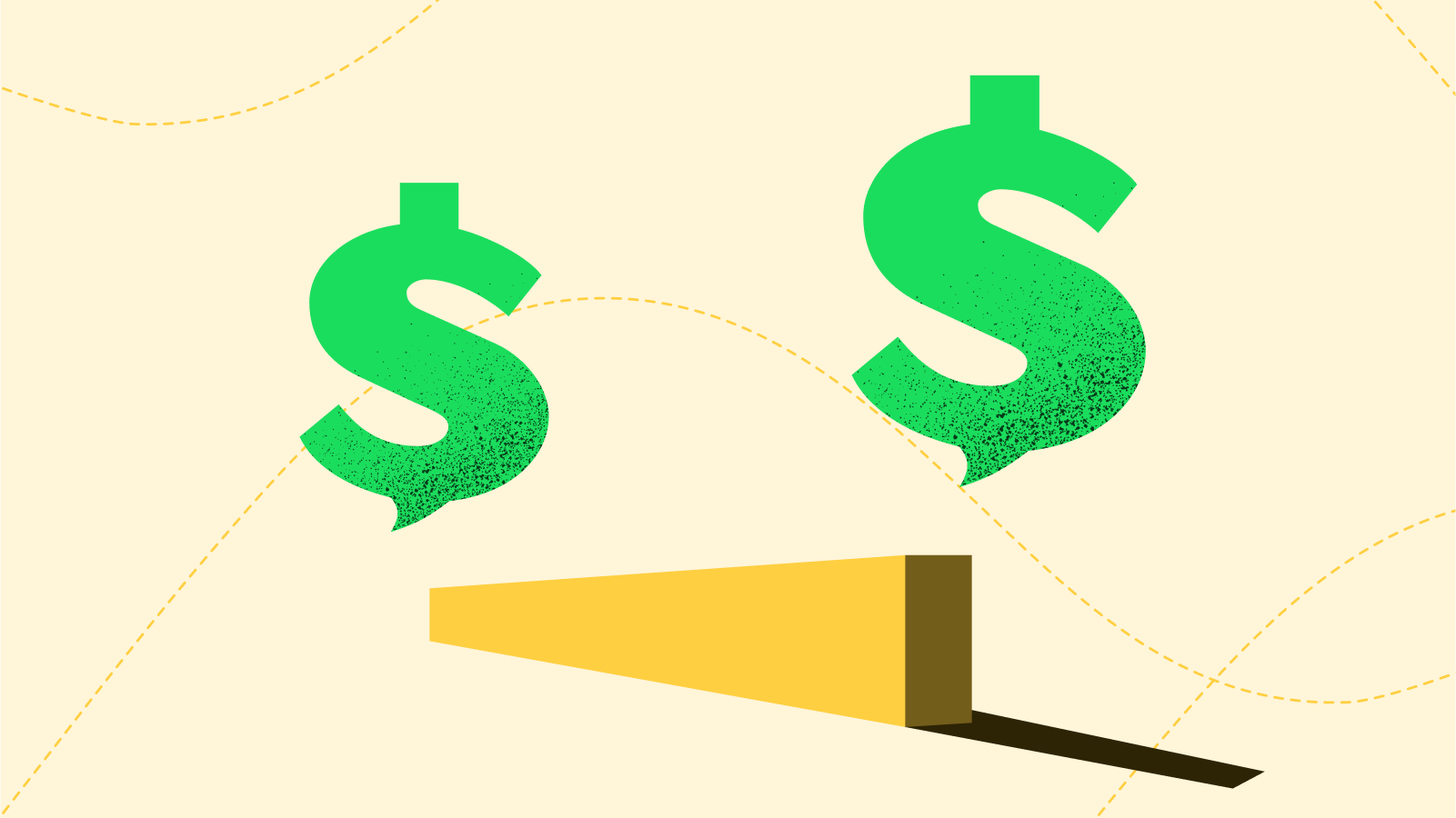Even in sales, talking price can feel like bringing up politics at Thanksgiving dinner—awkward, unpleasant, and a little taboo.
But no matter how wonderful your product or service is, you can’t close deals if you can’t effectively talk about pricing and payments.
Read this blog to learn:
- Why prices are more than just a number
- The do’s and don’ts of pricing discussions
- How to respond to buyers who want to talk about price prematurely
Get ready to become a better seller in 3…2…1…
Prices are much more than a number
Price points tell the buyer more than the amount that will come out of their pocket. Before sales reps start throwing numbers around, they should understand everything their products’ prices stand for, for both the customer and the business.
- Price is positioning. The dollar sign next to your product communicates its worth in comparison to other solutions in the market. Depending on where a business is in its go-to-market journey, prices will reflect its goals, aspirations, and target audiences.
- Price communicates value. An object’s price generates a perception of the value it will give to a person’s life. This is why some buyers will choose the more expensive item in a product category; because they see less inherent value in the cheaper option.
- Price builds trust. Your prices and the way you share them say a lot about what you value. Being clear and honest in your pricing discussions is a simple way to show your responsible, ethical intentions and build trust with your potential customers.
- Price can be empowering. Once sellers properly establish the value of their product, price can become something positive and empowering; they can even strengthen your negotiations in the sales process.
How to discuss prices and close better, faster deals
Here are some “do’s” and “don’ts” for mastering your pricing discussions and moving your leads down the funnel without skipping a beat.
DO talk value before you talk price
The more value you create, the more value you can command; plain and simple.
One study found that, while average and low-performing reps spread pricing discussions evenly throughout their sales calls, the top 5% discuss price most commonly in the final 20% of their time with a lead.
The takeaway? Spend time creating value before you jump into price.
Learn things like:
- How much support does this prospect need?
- What are their pain points, wants, and needs?
- What’s their budget?
- How much value is your solution able to create for them?
- How will that value be qualified?
Once you have this information, you can paint an improved reality for your prospect post-purchase and establish your product’s unique value. When the conversation moves towards price, not only will you be able to create an offering that better aligns with their budget, but your prospects will understand the value that comes with the cost and will be more open to purchasing.
DON’T oversell
After revealing prices, many salespeople will desperately try to justify it. “That comes with a free implementation, 6 months of white-glove support, and three additional seats on your plan, which our competitors never do. And if you add more users, you’ll get a price reduction of….”
On and on it goes.
Bombarding the customer with added features and benefits is going to give them the impression you are compensating for a poor product and a bad deal.
DO be confident, clear, and concise
Instead of overselling or muttering your price like it’s a dirty word, confidently and clearly state the numbers. You’re not asking for permission to charge for your full value. Ditch the vocal question mark and speak about your prices with unwavering confidence.
DON’T over-negotiate
When buyers want to negotiate, sellers without good objection-handling skills can find themselves on a slippery slope. Making promises you can’t keep, going below your bottom line, and closing unprofitable deals are all symptoms of poor negotiation.
As you enter pricing discussions, come prepared with your concessions and never give up more than that. Other tips for a successful negotiation include:
- Active listening. Use body language like a head nod, a smile, or a simple “uh huh” to demonstrate that you are actively listening to your prospect’s needs.
- Show how their needs will be met. Always look at the situation from the customer’s perspective and find ways to make them feel satisfied.
- Look for alternatives. Price isn’t the only way to find a win-win outcome. Reach a compromise on other terms such as payment terms, extra support, or package add-ons.
DO pick the right time
Your prices are most important to your leads at two times in the buyer’s journey:
- At the start of sales discussions. This is when they are trying to decide if they could even consider your product.
- Before they make a purchasing decision. This is when they are considering their other options and weighing the benefits of choosing your product.
A study from Gong found that win rates are highest when pricing is discussed on the first call (42%) rather than the second (32%) or third (15%) calls. The earlier you bring up the prices the better (but remember, it still needs to be after you’ve established value).
Naturally, price will come up again before the buyer signs the dotted line. As you guide your leads to a close, try to keep pricing clear but not central. Continue to direct your focus on your product’s value and the solutions it will give to your future customers.
How to deal with buyers who want to talk price prematurely
Having a strategy for discussing price is great, but what happens when you hear the dreaded: “Just send me over your offerings, and then we can talk”?
If you prematurely discuss price, you instantly establish your solution as a commodity. It’ll be hard to establish unique value (and close a deal) with this prospect from that point on.
So what should you do?
We have a few potential responses to help you maneuver the situation and prevent buyers from being scared off.
“What’s your budget?”
If a prospect tells you they don’t want to waste their time if your price is out of their budget, it’s a perfect time to ask them exactly what their budget is. This will help you create a more enticing offer and align your pricing options to their needs.
“Which features of my product sound most helpful to you?”
This is a great response if you haven’t touched upon the full value of your product and you want to learn more about their specific pain points. Kindly tell the buyer that, in order to give them a more accurate estimate, you need a better idea of their needs and goals.
“Our products and services typically fall between X amount and Y amount”
Providing a price range is another way to open up opportunities to talk about their needs without throwing out a specific number too early. By emphasizing that every client’s situation is unique (hence the range in price), you can ask them additional questions about their current problem and desired results.
In closing
The way you talk about price is either a red flag or a sign of trust for buyers.
When sales reps know how to drive value-based discussions, deliver offers confidently and timely, and negotiate smart deals, they can lead pricing discussions that help them hit quota, quarter after quarter.
Continue to learn best sales practices and become a top-performing seller by giving us a follow on LinkedIn.





